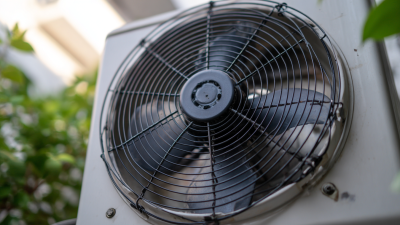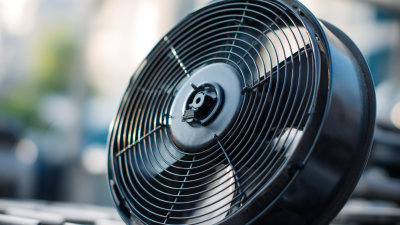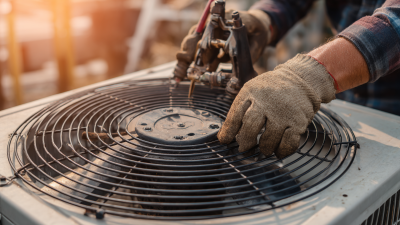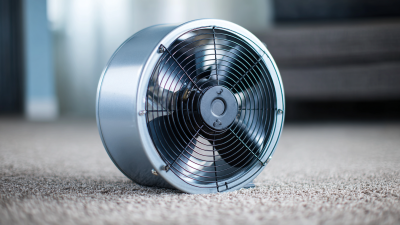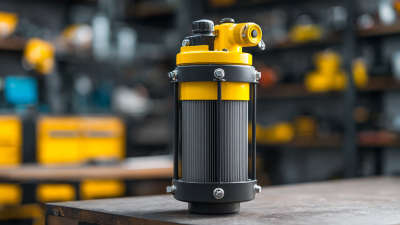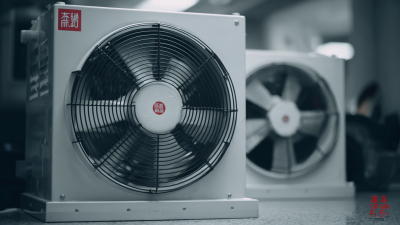




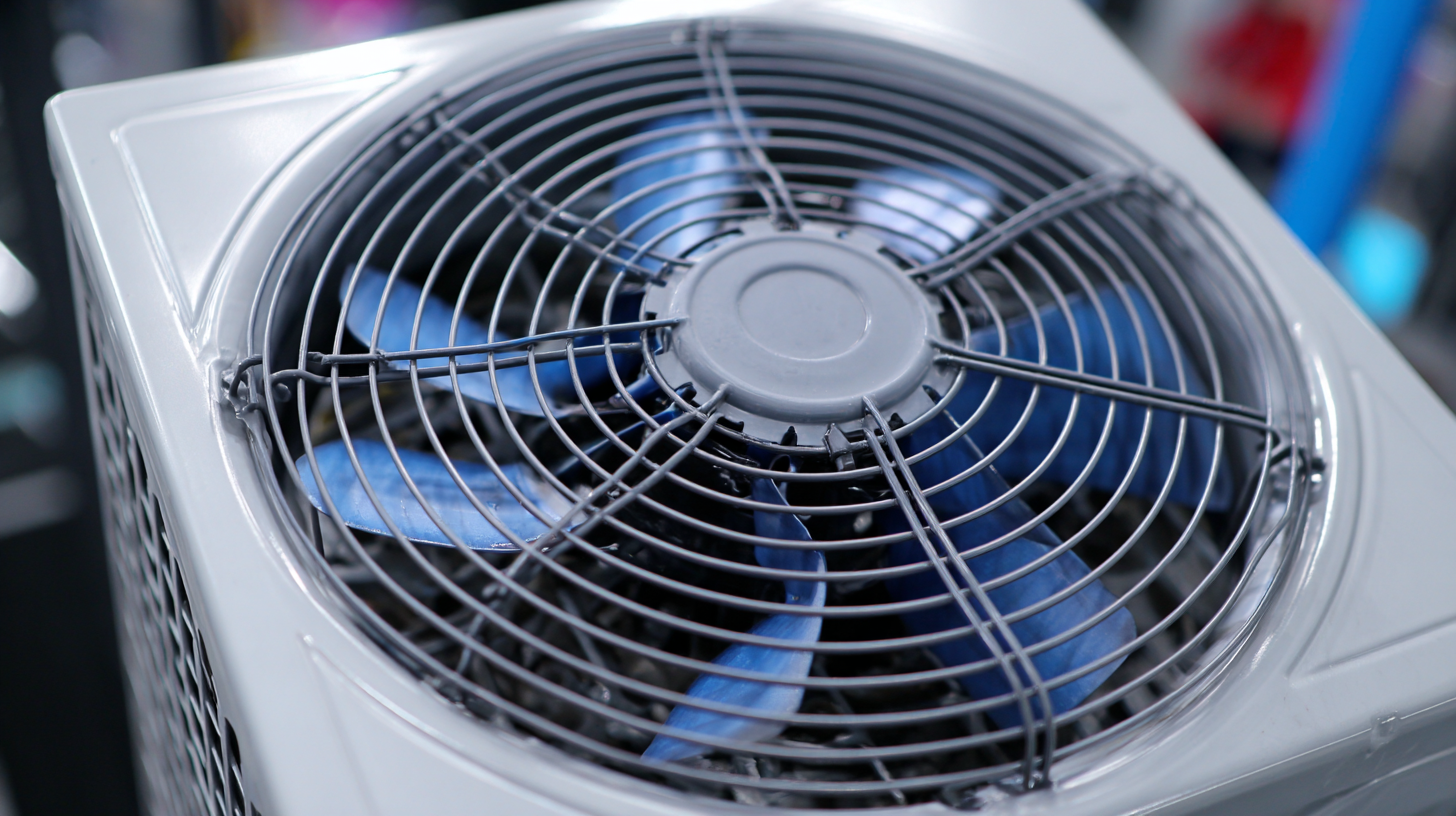 Air Conditioner Fan Motors play a crucial role in determining the overall energy efficiency and cooling performance of HVAC systems. According to the U.S. Department of Energy, approximately 30% of residential energy consumption is attributed to cooling and heating, with fan motors significantly influencing this statistic. Efficient fan motors can drastically reduce energy consumption, leading to lower utility bills and decreased environmental impact.
Air Conditioner Fan Motors play a crucial role in determining the overall energy efficiency and cooling performance of HVAC systems. According to the U.S. Department of Energy, approximately 30% of residential energy consumption is attributed to cooling and heating, with fan motors significantly influencing this statistic. Efficient fan motors can drastically reduce energy consumption, leading to lower utility bills and decreased environmental impact.
The latest advancements in fan motor technology, such as the implementation of variable speed motors, are shown to enhance airflow management and optimize system performance. Industry reports indicate that replacing outdated fan motors with high-efficiency models can yield energy savings of up to 50%. As the demand for improved energy-efficient solutions continues to rise, understanding the impact of Air Conditioner Fan Motors becomes essential for both consumers and industry professionals aiming to achieve optimal cooling performance while minimizing energy expenditures.
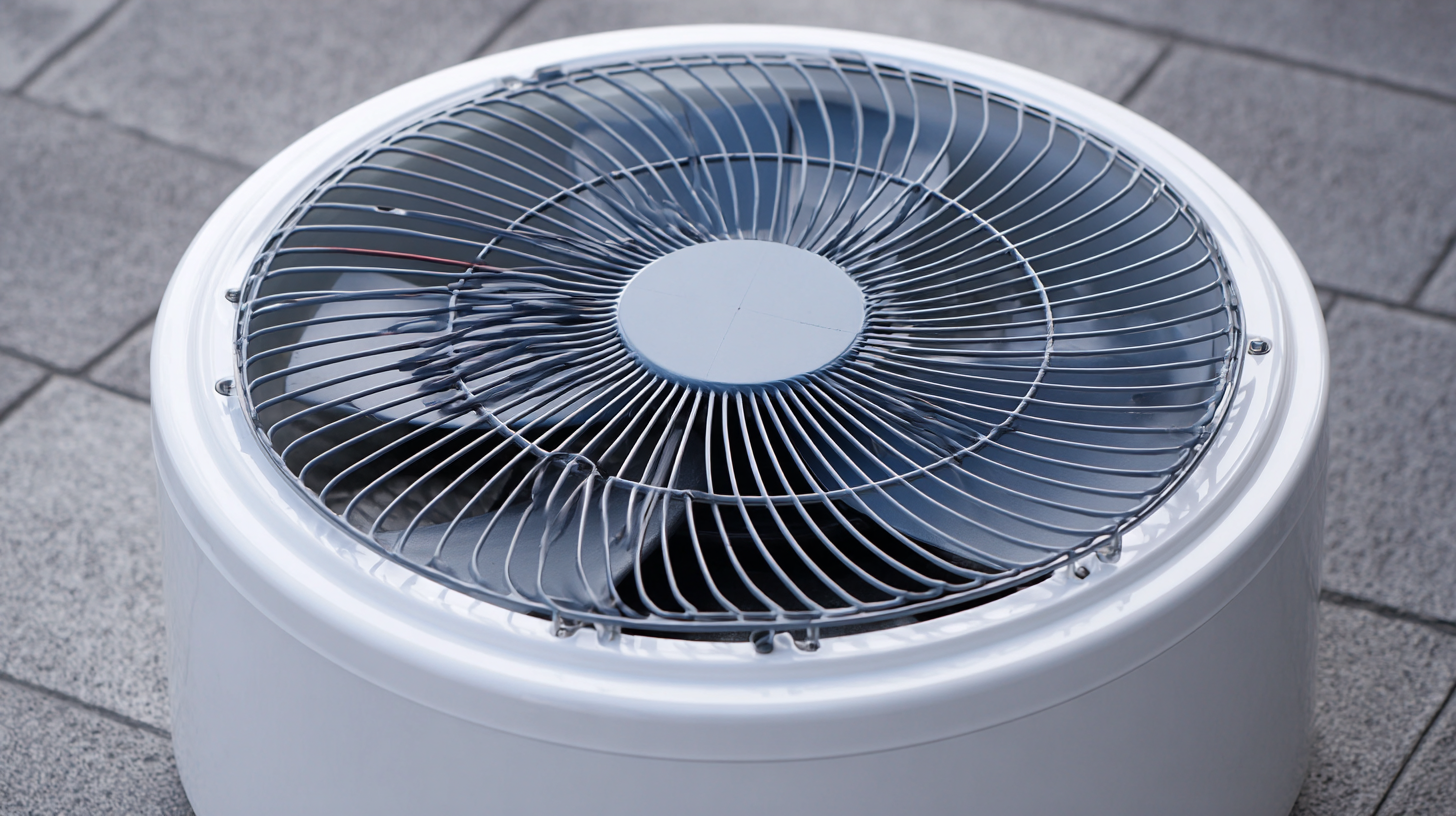 The fan motor technology used in air conditioners plays a crucial role in determining energy consumption and overall cooling performance. Traditional single-speed motors often operate at fixed rates, leading to inefficiencies during lower cooling demands, where they run at full capacity without adjusting to the cooling needs. In contrast, modern variable-speed motors can dynamically adjust their speed based on real-time cooling requirements. This technology not only enhances comfort by maintaining consistent temperature levels but also significantly reduces energy usage.
The fan motor technology used in air conditioners plays a crucial role in determining energy consumption and overall cooling performance. Traditional single-speed motors often operate at fixed rates, leading to inefficiencies during lower cooling demands, where they run at full capacity without adjusting to the cooling needs. In contrast, modern variable-speed motors can dynamically adjust their speed based on real-time cooling requirements. This technology not only enhances comfort by maintaining consistent temperature levels but also significantly reduces energy usage.
Furthermore, advanced fan motor designs incorporate features such as electronic commutation and brushless operation. These improvements enhance the reliability and longevity of the motors, while also minimizing energy wastage. For example, brushless motors produce less friction and heat, translating into higher efficiencies. The integration of smart technologies in fan motors also allows for better control systems, optimizing performance based on external conditions. As a result, investing in higher-quality fan motor technology is essential for improving the energy efficiency of air conditioning systems and reducing the environmental impact associated with high energy consumption.
The efficiency of air conditioner fan motors plays a crucial role in determining the overall cooling performance of HVAC systems. A high-efficiency fan motor can significantly reduce energy consumption while providing optimal airflow. This balance is essential, as an inefficient motor can lead to increased energy bills and diminished cooling capacity. When evaluating air conditioners, it is important to consider not just the cooling capacity rated in BTUs but also the type of fan motor utilized.
**Tips:** When shopping for air conditioners, look for models with energy-efficient fan motors, which are often labeled with ENERGY STAR ratings. Additionally, consider the speed settings available on the fan motor; multiple speeds can optimize airflow as per cooling needs, ensuring better efficiency in various conditions. Regular maintenance, such as cleaning the fan blades and ensuring the motor is lubricated, can also extend the motor's lifespan and maintain performance.
Moreover, advancements in technology have led to the development of variable speed fan motors. These motors adjust their speed based on the cooling demand, leading to less energy waste and improved indoor comfort. When selecting an air conditioning unit, inquire about the fan motor type and its efficiency ratings to maximize both cooling performance and energy savings.
The type of fan motor in air conditioning (AC) units plays a crucial role in determining both energy efficiency and cooling performance. Traditional PSC (Permanent Split Capacitor) motors have been widely used in older models due to their simplicity and cost-effectiveness. However, energy-efficient ECM (Electronically Commutated Motors) are gaining traction, delivering significant improvements in efficiency. According to a report by the U.S. Department of Energy, ECMs can reduce energy consumption by up to 70% compared to typical PSC motors. This reduction is particularly significant during high-demand periods when energy savings can translate into substantial cost benefits for consumers.
Moreover, the cooling performance of different fan motor types varies considerably. A study published by the Air Conditioning, Heating, and Refrigeration Institute (AHRI) indicates that ECMs not only enhance energy efficiency but also provide more consistent airflow and temperature regulation. This feature allows for improved dehumidification and comfort levels within indoor environments. The versatility and adaptive capabilities of these motors in varying operational conditions can enhance overall system performance, making them a preferable choice for modern AC units aimed at achieving higher SEER (Seasonal Energy Efficiency Ratio) ratings.
| Type of Fan Motor | Energy Efficiency Ratio (EER) | Cooling Capacity (BTU/hr) | Power Consumption (Watts) | Average Noise Level (dB) |
|---|---|---|---|---|
| Single-Speed Motor | 10.5 | 12,000 | 1050 | 50 |
| Variable-Speed Motor | 12.5 | 14,000 | 950 | 45 |
| EC Motor (Electronically Commutated) | 13.0 | 15,000 | 850 | 40 |
| Direct Drive Motor | 11.0 | 13,000 | 1000 | 55 |
The advancement in fan motor designs plays a pivotal role in enhancing energy efficiency and cooling performance within HVAC systems. Traditional fan motors often operate at a fixed speed, which can lead to energy inefficiencies as they run continuously at full capacity, regardless of the actual cooling demand. With the introduction of advanced fan motor technologies, such as variable speed motors and electronically commutated motors (ECMs), HVAC systems can now adjust their output according to real-time requirements. This innovative approach significantly reduces energy consumption by allowing the system to ramp up or slow down based on indoor temperature fluctuations.
Quantifying the energy savings from these advanced fan motor designs reveals substantial benefits. For instance, studies have shown that ECMs can improve energy efficiency by approximately 40%, translating to noticeable reductions in electricity costs for consumers. Moreover, these motors not only enhance the overall performance by providing more consistent cooling and temperature control but also decrease wear and tear on the system. Consequently, HVAC units equipped with advanced fan motor designs not only contribute to lower energy bills but also extend the lifespan of the equipment, underscoring the importance of investing in modern fan technologies to maximize both efficiency and performance.
The energy efficiency of air conditioner fan motors has become a focal point in the HVAC industry, especially given the increasing regulatory measures aimed at reducing energy consumption. One notable standard is the Department of Energy's (DOE) rule that mandates higher energy efficiency levels for residential HVAC systems. According to the DOE, implementing more efficient fan motors can improve overall system efficiency by up to 30%, contributing significantly to lower energy bills for consumers and a reduced carbon footprint for the environment.
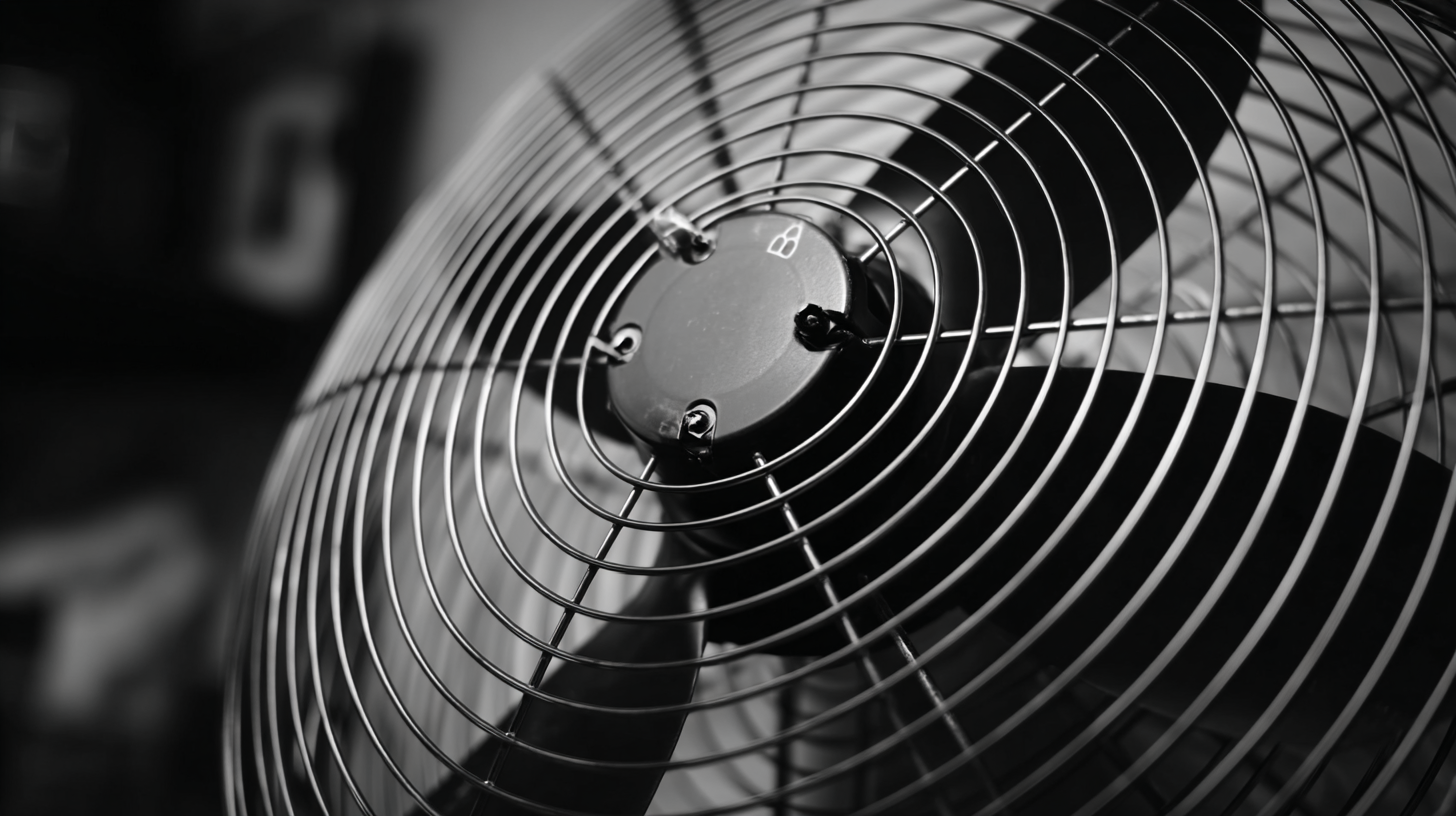
Moreover, the development of new motor technologies, such as electronically commutated motors (ECMs), is changing the landscape of air conditioning systems. ECMs not only provide superior performance but also comply with stringent energy regulations. For instance, a report by the American Council for an Energy-Efficient Economy (ACEEE) highlights that transitioning to these motors can lead to energy savings of 50% or more compared to traditional PSC (permanent split capacitor) motors. As regulatory standards continue to evolve, manufacturers are pressed to innovate and adopt these advanced technologies, ensuring compliance while enhancing cooling performance. This shift not only reflects compliance with regulations but also aligns with broader sustainability goals.
